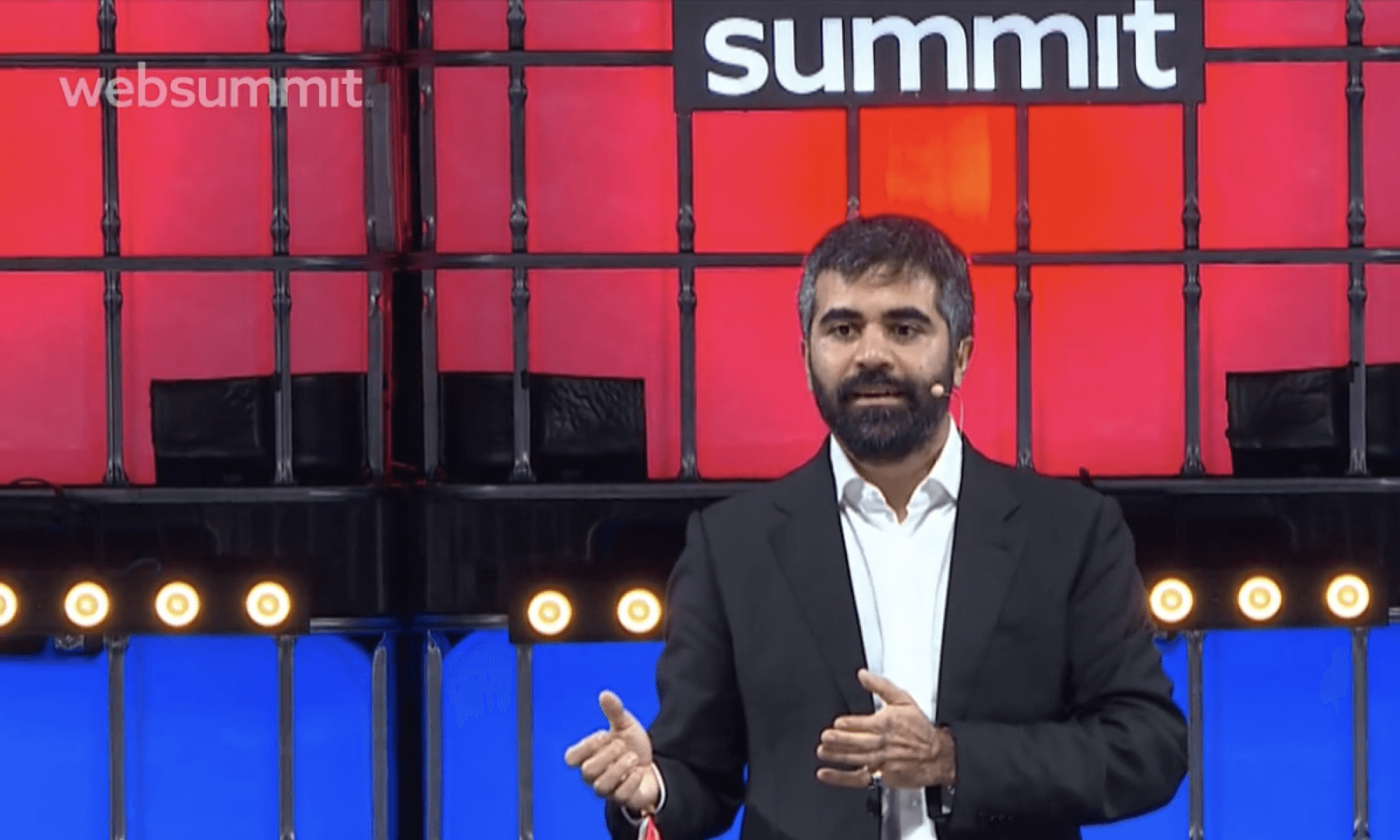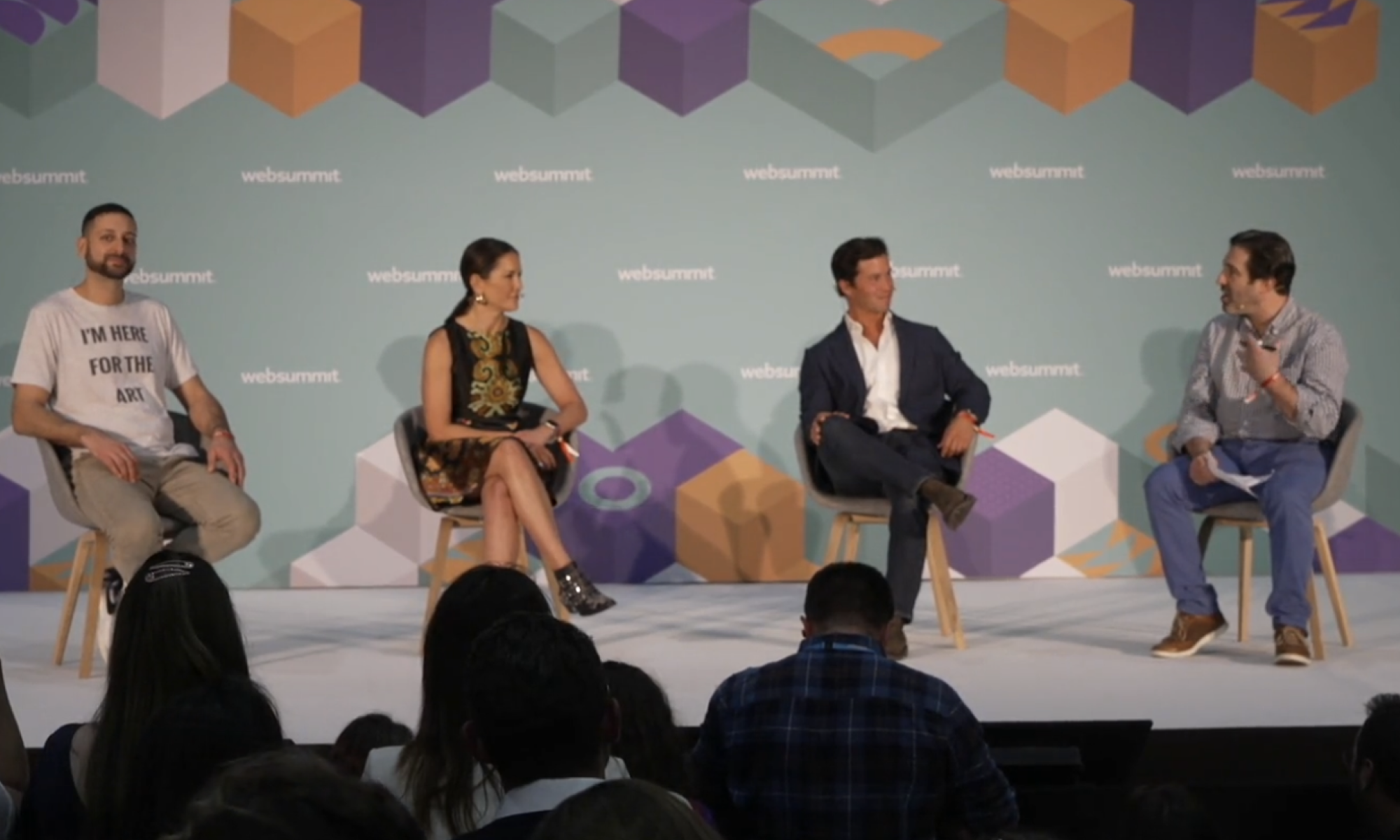What is the Metaverse and what will it mean in practice for you, and for your organisation? It’s becoming clearer every day as the space evolves.
A couple of weeks ago, I attended Web Summit in Lisbon and enjoyed a wild ride through the latest in tech industry thinking.
As a product designer and tech enthusiast, I have been closely following news within the Metaverse space, and Web Summit’s given me plenty of juicy and exciting updates to share.
What is the Metaverse?
The Metaverse, or Metaverses, are still being built, so there is a serious lack of clarity around the basic definition.
For example, the internet existed in the 1970s, but not every attempt to conceptualise it got close to where it ended up.
Meta, the parent company of Facebook, has been pushing its Metaverse strategy hard, to questionable results. Many people have Meta’s marketing messaging front-of-mind when thinking about the Metaverse.
The concept and technology of the Metaverse exists outside of Meta’s slightly creepy virtual meeting rooms, however. It’s not an idea they own, even if their company name might imply it.
In truth, the Metaverse is a group of spaces where we can augment reality or live in virtual reality.
What makes it different is that it exists even when you are not there. It’s a constant experience that you can move in or out of.
You might argue that a lot of gaming worlds are spaces which exist whether you are in them or not. The Metaverse itself, however, is the technical grounding on which these technologies are built, rather than the specific worlds that result.
Typically, these worlds are accessed through AR or VR headsets.
Fortnite, for example, considers some aspects of its gaming universe a Metaverse, despite being accessed through a PC, phone, or console.
The vision of what the Metaverse could be in the future is a common space where all these worlds co-exist. A pervasive thought is that it will be a portal which allows you to move seamlessly between different worlds and virtual spaces.
Web3 and crypto enter the conversation whenever the idea of a new digital economy arises. That means a Metaverse powered by decentralised blockchain technology, with crypto wallets and tokens used to buy goods created and sold in the Metaverse space.
There are some big ideas about being able to move between worlds and spaces, taking items from different worlds with you. But there’d have to be a high degree of collaboration and cooperation between companies and creators to make this a reality.
There are no rules when it comes to defining the Metaverse in these initial stages of adoption. Marketing maestros can refer to a single world as a Metaverse if they like. There’s also language around having a “multiverse of metaverses”.
It is, frankly, very confusing.
But stick with it and you will find that there are many opportunities hidden behind the jargon.
The Metaverse and Web Summit
The curve of adoption for the Metaverse is far from established.
There are many limitations to overcome, such as clunky VR headsets, dorky augmented reality glasses and accessibility requirements that need to be addressed in these new spaces.
However, Gartner expects that by 2026, 25% of people will spend at least one hour a day in a Metaverse for work, shopping, education, social media and/or entertainment.
Web Summit offered up several visions of the future of the Metaverse.

The multiverse of metaverses
Herman Narula, co-founder, and CEO of Improbable, pictured above, demoed some of the powerful technology they have been building to underpin Metaverse capabilities.
Improbable’s Morpheus technology now allows 20,000+ users to interact in the same place, with their real voice, without lag.
Although Improbable is a gaming company at heart, Narula’s vision for the Metaverse has a wider reach of experiences for brands and businesses. He believes rich, awe-inspiring, out-of-the-ordinary delights are the future for the Metaverse.

In another talk, ‘Metaverse for all’, a slightly different view of the future of the Metaverse emerged. This conversation was centred around the usefulness of the technology.
Natalie Monbiot from Hour One believes there are huge opportunities in the world of work, especially in increased productivity.
She believes a ‘virtual twin’ will represent you at work, look thoroughly professional, and take care of administrative duties, while you take care of more important tasks.
Darren Shou, from NortonLifeLock, discussed virtual teachers. He sees ways to improve learning within the Metaverse. In fact, VR-powered training achieves a retention rate of up to 75%. That’s significantly higher than audio-visual learning with a retention rate of only 20%.
Peter Koerte, the Chief Technology and Strategy Officer at Siemens, spoke about the industrial Metaverse.
In the industrial world, Peter demonstrated how traditional CAD designs can now exist, fully realised, as a ‘digital twin’ (an accurate digital representation) in a Metaverse experience.
In real time, you can change the colours, interiors, parts, and design within a simulated environment.
He sees huge benefits in optimising products for sustainability before creating physical prototypes. Plus, simulated Metaverse images can be used to build more accurate AI models, faster.
So, industry, business and gaming are exploring the Metaverse’s huge potential, but how will we as individuals navigate the Metaverse? Who will we be in these virtual worlds?
R/GA explored identity within the Metaverse. In a survey of 298 users of the Metaverse, they found that 68% felt their Metaverse avatar expressed a side of them that wasn’t possible in the physical world. And 65% felt their avatar was an extension of themselves.
R/GA research has also shown that some people prefer being part of job interviews in the Metaverse because they feel more comfortable and confident as their virtual self.
More than half of those surveyed said they had made a friend within a virtual world.
In the Metaverse space someone’s identity can be much more fluid. R/GA invited Don Allen Stevenson III, a Metaverse creator, to speak directly from a Metaverse space about this phenomenon.
Don showed how his identity could visually shift and change. He could become a talking banana to bring more energy to a meeting; augment his expressions to show he is thinking deeply about a topic; or try on makeup and dresses. I loved how he described this identity in the Metaverse as more of a slider than a checkbox, constantly adapting and changing.
Will we be able to try on different products and services in these spaces? Experiment with different versions of ourselves? Perhaps bring these revelations back with us into the physical realm? The possibilities are endless.
Finally, given Meta’s dominance in the Metaverse space, I couldn’t sign off without mentioning a great talk from Meta’s oversight committee.
Meta has a stated interest in wellbeing and appropriate content creation within the Metaverse space, even at this early stage.
Regulators are usually quite slow to catch up to the pace of new technologies. Meta is promising an independent body exploring these topics and creating recommendations before widespread Metaverse adoption.
Strange new worlds
From a product design perspective, Metaverse experiences are fascinating.
New technologies are spun out of novel interaction patterns conceived in this experimental phase, and vice versa. This close collaborative innovation pushes the evolution of the medium forward fast.
At SPARCK, we continue to stay up to date with design practices within the space.
Get in touch to discuss or plan your Metaverse strategies.
We have a team of future-thinkers that can turn your ambitions into reality and put you ahead of the competition.



